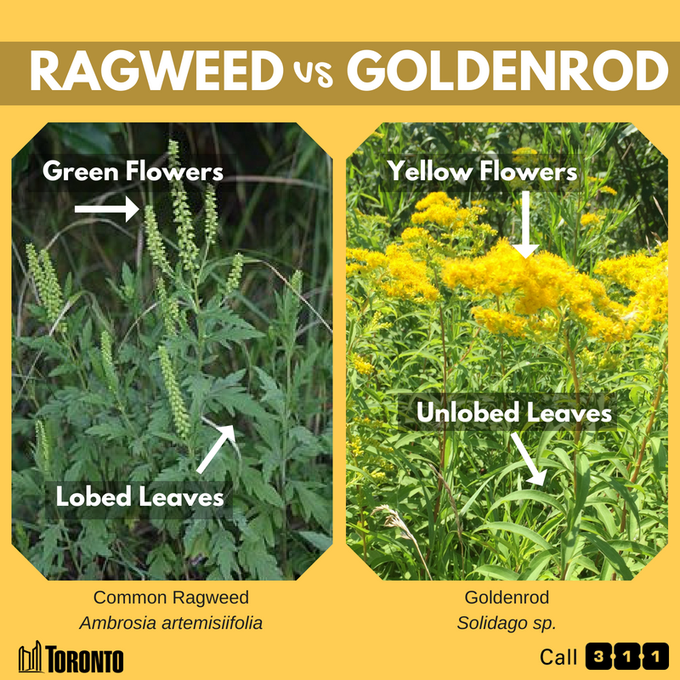When we bought our countryside cottage, I expected the usual homeowner chores: clean the gutters, trim the trees, keep the spiders out of the wine glasses. I knew ragweed from Canada, but I didn’t expect that in Hungary, you could actually be fined just for having it on your property. We haven’t been fined (thankfully), but the reality is you can be – for hundreds of euros – if ragweed is found growing on your land.
It’s one of those rules you’d never know about unless a Hungarian friend mentions it, or you get a fine in the post. And it applies to everyone: city dwellers, country weekenders, holiday home dreamers. So if you own land here, even a small garden or empty plot, here’s what you need to know about ragweed fines in Hungary, and how to avoid them.
What Is Ragweed and Why Does Hungary Care?
Ragweed (Ambrosia artemisiifolia, or parlagfű in Hungarian) is a fast-growing, invasive plant with deeply lobed green leaves and small greenish flowers. It seems innocent enough, but the pollen it produces is a public health nightmare.
Hungary has some of the highest ragweed pollen counts in Europe, and every summer it causes misery for allergy sufferers—sneezing, congestion, asthma, and worse. The government takes it very seriously, and so does the law.
Under Act XLVI of 2008, landowners are legally required to keep their property free of blooming ragweed, even if they didn’t plant it, even if they don’t live there, and even if they’re just weekend visitors.
How Ragweed Fines in Hungary Actually Work
Hungary’s weed control rules aren’t just guidelines – they’re enforced. If inspectors find blooming ragweed on your land, they can issue instant fines based on location and land size.
Here’s how it breaks down:
Urban Areas (Belterület):
-
Under 50 m² – HUF 15,000
-
50–200 m² – HUF 15,000–50,000
-
200–1,000 m² – HUF 50,000–100,000
-
1,000 m²–1 ha – HUF 100,000–750,000
-
Over 1 ha – Up to HUF 5 million
Rural Areas (Külterület):
-
Under 1 ha – HUF 15,000–50,000
-
1–5 ha – HUF 50,000–150,000
-
5–10 ha – HUF 150,000–225,000
-
Over 10 ha – From HUF 225,000 to 5 million
These ragweed fines in Hungary are issued by government agencies like NÉBIH, and they don’t always give advance notice. Sometimes, an inspector shows up, sees blooming parlagfű, and you get a letter later.
👉 The original report on this, in Hungarian, is available here on Hitel Fórum.
If you notice an area infected with ragweed, you can report it to the competent authorities via the Ragweed Reporting System (PBR): https://pbr.nebih.gov.hu
Ragweed ( Ambrosia artemisiifolia L.) is not native to Hungary, it appeared in the southern part of our country in the 1920s, and then began to spread explosively after 1945, primarily along the main grain trade routes. Today, it can be found throughout the country, especially in agricultural areas, young fallow lands, uncultivated areas, and ruined soils (e.g., construction sites).
How to Recognise Ragweed
Here’s a quick visual and description to help you identify the culprit:
-
Bright green, fern-like leaves
-
Small, spike-like green flowers at the top
-
Grows up to 2 metres tall
-
Thrives in untended areas, vacant lots, and disturbed soil

How to tell the difference: Ragweed (left) vs. Goldenrod (right). One causes fines in Hungary, the other just gets blamed. Image courtesy of the City of Toronto.
If you’re not sure, ask a local gardener or take a photo to a garden centre. Better safe than fined.
Tips to Avoid Ragweed Fines in Hungary
Even if you don’t live on your property full-time, the law doesn’t care. Here’s how to stay compliant:
✅ Check your land regularly – Especially in June and July
✅ Mow or clear before flowering – Aim for mid-June, then again in mid-July
✅ Hire help – Gardeners, landscapers, or even a neighbour can keep things tidy
✅ Photograph your efforts – A simple phone picture can help you prove compliance
✅ Pay attention to alerts – NÉBIH often announces inspection periods
If you’re managing a holiday home, it may be worth hiring a seasonal groundskeeper. The cost of monthly maintenance is far less than even the smallest fine.
Yes, This Applies to Expats and Holiday Homeowners
There’s no exemption for nationality. Whether you’re Hungarian, Canadian, British, or Martian – if your name is on the property deed, you’re responsible for what grows there.
This can be especially tricky if you’re new to Hungary or only use your place in summer. Even an empty plot can attract fines if it’s not regularly maintained.
One Last Thing Before You Mow…
If this caught you off guard, you’re not alone. It’s one of those unspoken rules that Hungarians grow up with, but nobody mentions during your property search or at the notary. A few innocent-looking weeds might not seem like a big deal, until they bloom, trigger half the village’s allergies, and leave you with a fine you weren’t expecting.
It doesn’t take much to stay compliant. Just know what to look for, mow when it matters, and don’t assume nature gets a free pass.
And if this is the kind of surprise you’d rather avoid, you might want to read the rest of them before they show up in your mailbox.
HOW TO HUNGARY: Budapest & Beyond is your comprehensive guide to moving, living, and finding your way in Hungary, filled with expert insights, practical tips, and personal stories from someone who’s actually done it.
Not sponsored. Expert-reviewed. Written by someone who’s done it. If you’re moving to Hungary, or even thinking about it, this guide could save you thousands. It’s packed with 500+ links and answers you won’t find anywhere else.
Buying it keeps the updates coming – and supports the free blog and social content too.

Anikó Woods is a Canadian-Hungarian writer, technology specialist, and digital strategist who swapped Toronto traffic for Hungarian bureaucracy. She’s the creator of HOW TO HUNGARY: Budapest & Beyond. Since moving to Hungary in 2017, she’s been deep in the paperwork trenches – fact-checking, interviewing experts, and helping others make sense of the madness. Her writing turns chaos into clarity, with a few laughs (and wine recommendations) along the way.

0 Comments